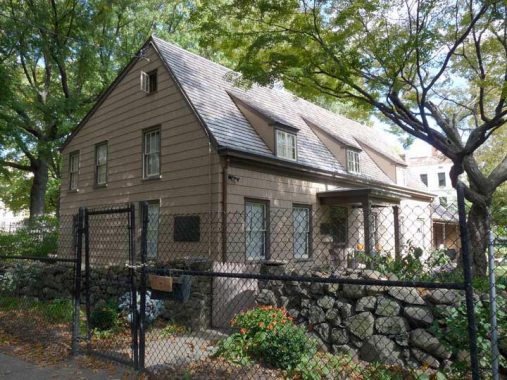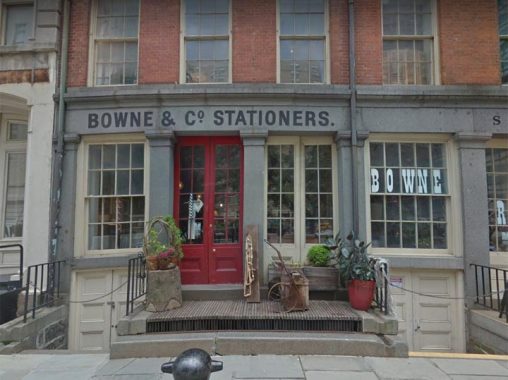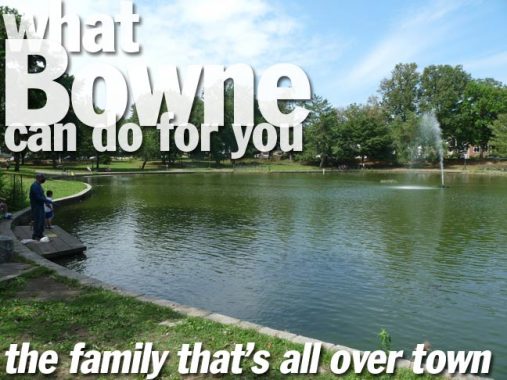Bowne House, on Bowne Street north of 38th Avenue in Flushing, Queens, was built in 1661 by English settler John Bowne and, unlike many other colonial houses from the 17th and 18th centuries, it still looks a great deal like it did when it was built (though a coat of paint wouldn’t hurt).

Peter Stuyvesant, continuing his reign of terror against religious dissenters, had Bowne, a Quaker, arrested in 1662. Before the construction of the Friends Meetinghouse (see above), Bowne’s house was the primary site for Quaker services. Sentenced to pay a hefty fine, Bowne refused and was jailed; he was subsequently exiled to Holland. While he was there, Stuyvesant’s bosses at the Dutch West India Company reversed Stuyvesant’s non-tolerant policy, claiming that the colony needed many immigrants to ensure economic expansion, no matter what faith they were. Bowne returned home to Flushing in 1664; the British sailed into New Netherland five months later, and Stuyvesant surrendered without a shot being fired.
Bowne’s illustrious descendants included Robert Bowne, who founded the still-extant Bowne & Co. financial printers; Walter Bowne, NYC mayor from 1829-1833; shipping magnate Robert Bowne Minturn; and abolitionist Mary Bowne Parsons, wife of horticulturalist Samuel Parsons, who may have used the Bowne House as an underground railroad way station.

Bowne & Co. Stationers at 211 Water Street, at the South Street Seaport, is a working job print shop as well as a department of the South Street Seaport Museum. It was one of the first preservation projects undertaken by the Museum in 1975.
Two hundred years before, a dry goods store called Bowne & Company had opened, and it later focused on printing, especially financial documents like prospectuses and merger proxies. One of its customers was Lehman Brothers, the investment bank that collapsed in 2008. Today, Bowne Printers still works in handset type, as was done 200 years ago. The Bowne family has far flung holdings in the NHYC area; the John Bowne House (see above), built in 1661, still stands in Flushing, Queens. Other Bownes settled in City Island, an island in Eastchester Bay part of New York City since 1895, and there, Bowne Street recollects their presence.
The museum says the original shop’s inventory was itemized in a city directory in 1829 as gilt-edge letter paper, straw paper, tissue paper, copying paper, drawing paper, blank books, bill books, cargo books, bankbooks and seamen’s journals.
Print shops of this type originated common phrases like “uppercase” and “lowercase” as the letters were once kept in 2 separate cases. “Mind your p’s and q’s” came about because the two lowercase letters are mirror images of the other.
Meanwhile there’s a Bowne Street in Brooklyn, in Red Hook. According to Benardo & Weiss’ Brooklyn By Name, that Bowne Street is named for brothers Rodman and Samuel, who ran a ferry from Red Hook to Catherine Street in Manhattan beginning in 1811.
Bowne Park is a somewhat large park in Murray Hill, Queens, northeast of Flushing. Shaded paths wind around a central lake and there’s a playground on the eastern end of the park, which is between 29th and 32nd Avenues and 155th and 159th Streets. The Bowne this park is named for is Walter (1770-1846), who served as NYC mayor from 1828-1832. Walter Bowne’s summer residence stood on the site until it burned down in 1925 and the City acquired the property for parkland.
Bowne was in office during a cholera epidemic and in 1832 established a strict quarantine restricting travel in and out of the city which at that point consisted of just Manhattan island, in a situation that reminds us of the current situation with Covid-19. Bowne, and others at the time, were unaware that cholera is not contagious and only much later, in 1883, was it discovered that cholera is spread through contaminated water or food. Despite his efforts cholera killed hundreds of New Yorkers.
Check out the ForgottenBook, take a look at the gift shop, and as always, “comment…as you see fit.”
8/26/20
